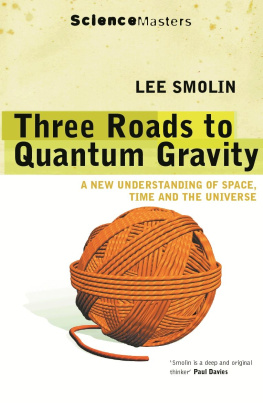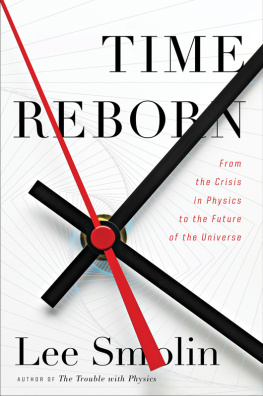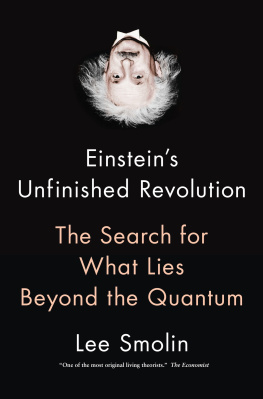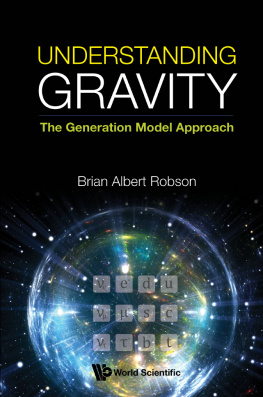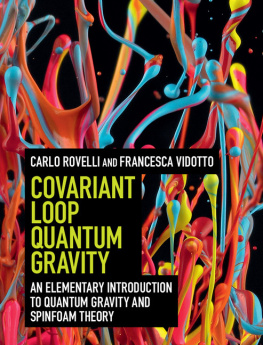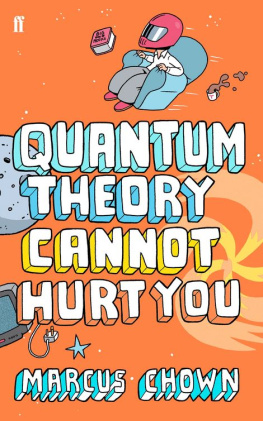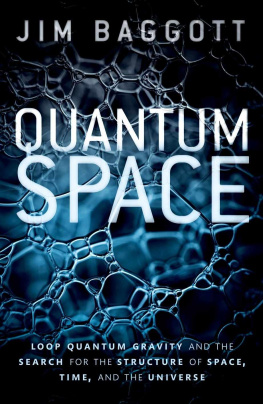These books admirably achieve what the series sets out to do to explain exciting science clearly
Sunday Times
The whole series manages to tell powerful stories very simply and cheaply. What more could you want?
Science Now
The Science Masters series looks set to play a major role in the responsible popularisation of science
New Scientist
Three Roads to Quantum Gravity
After reading his new book (which, I might say, makes Hawkings A Brief History of Time seem as intellectually demanding as Hello!), I am also tempted to predict the imminent emergence of a new type of physicist, as adept in philosophy as higher mathematics
Robert Matthews, New Scientist
Smolin is rare in being a researcher at the cutting edge of this work who, although he has specialised in one particular approach, is aware of alternative approaches and realises that there is no one true path there is sure to be something new for you to discover, and a great deal of pleasure to be gained from seeing how Smolin puts everything together to make a whole that is greater than the sum of its parts This is real 21st-century science
John Gribbin, Independent
In its expansiveness of vision, his book stands far above any other account that I know of for a general audience one can skate over some of the trickier pages and still emerge with a clear picture of the intended goal. That picture is, in one or two places, quite breathtaking in its elegance and power Smolin has made a wonderfully persuasive case that the quest for quantum gravity is not just alive, but positively humming
David Lindley, Nature
To my parents, Pauline and Michael
Three Roads to Quantum Gravity
A NEW UNDERSTANDING OF SPACE, TIME AND THE UNIVERSE
Lee Smolin

CONTENTS


I must thank first of all the Mends and collaborators who formed the community within which I learned most of what I know about quantum gravity. If I had not had the luck to know Julian Barbour, Louis Crane, John Dell, Ted Jacobson and Carlo Rovelli, I doubt that I would have got very far with this subject at all. They will certainly see their ideas and views represented here. Fotini Markopoulou-Kalamara is responsible for changing my views on several important aspects of quantum gravity over the last several years, which got me out of space and back into spacetime. Large parts of Chapters 2, 3 and 4 are suffused by her thinking, as will be clear to anyone who has read her papers. I am also indebted to Chris Isham for the several ideas of his that have seeped into my work, in some cases without my fully realizing it, and for his friendship and for the example of his life and thought. Stuart Kauffman has taught me most of what I know about how to think about self-organized systems, and I thank him for both the gift of this friendship and his willingness to walk with me in the space between our two subjects.
I am also very indebted for discussions, collaborations and encouragement to Giovanni Amelino-Camelia, Abhay Ashtekar, Per Bak, Herbert Bernstein, Roumen Borissov, Alain Connes, Michael Douglas, Laurant Friedel, Rodolfo Gambini, Murray Gell-Mann, Sameer Gupta, Eli Hawkins, Gary Horowitz, Viqar Husain, Jaron Lanier, Richard Livine, Yi Ling, Renate Loll, Seth Major, Juan Maldecena, Maya Paczuski, Roger Penrose, Jorge Pullin, Martin Rees, Mike Reisenberger, Jurgen Renn, Kelle Stelle, Andrew Strominger, Thomas Thiemann and Edward Witten. I add a special word of appreciation for the founders of the field of quantum gravity, including Peter Bergmann, Bryce DeWitt, David Finkelstein, Charles Misner, Roger Penrose and John Archibald Wheeler. If they see many of their ideas here, it is because these are the ideas that continue to shape how we see our problem. Our work has been supported generously by the National Science Foundation, for which I especially have to thank Richard Issacson. In the last several years generous and unexpected gifts from the Jesse Phillips Foundation have made it possible to concentrate on doing science at a time when nothing was more important than the time and freedom to think and work. I am grateful also to Pennsylvania State University, and especially to my chair, Jayanth Banavar, for the supportive and stimulating home it has given me over the last six years, as well as for showing some understanding of the conflicting demands placed upon me when I found myself with three full-time jobs, as a scientist, teacher and author. The theory group at Imperial College provided a most stimulating and friendly home from home during the years sabbatical during which this book was written.
This book would not exist were it not for the kind encouragement of John Brockman and Katinka Matson, and I am also very grateful to Peter Tallack of Weidenfeld & Nicolson, both for his encouragement and ideas and for being such a good editor, in the old-fashioned sense. Much of the clarity of the text is also due to the artistry and intelligence of John Woodruffs copy editing. Brian Eno and Michael Smolin read a draft and made invaluable suggestions for the organization of the book, which have greatly improved it. The support of friends has continued to be essential to keeping my own spirit alive, especially Saint Clair Cemin, Jaron Lanier and Donna Moylan. Finally, as always, my greatest debt is to my parents and family, not only for the gift of life but for imparting in me the desire to look beyond what is taught in school, to try to see the world as it may actually be.
Lee Smolin
London, July 2000

This book is about the simplest of all questions to ask: What are time and space? This is also one of the hardest questions to answer, yet the progress of science can be measured by revolutions that produce new answers to it. We are now in the midst of such a revolution, and not one but several new ideas about space and time are being considered. This book is meant to be a report from the front. My aim is to communicate these new ideas in a language that will enable any interested reader to follow these very exciting developments.
Space and time are hard to think about because they are the backdrop to all human experience. Everything that exists exists somewhere, and nothing happens that does not happen at some time. So, just as one can live without questioning the assumptions in ones native culture, it is possible to live without asking about the nature of space and time. But there is at least a moment in every childs life when they wonder about time. Does it go on for ever? Was there a first moment? Will there be a last moment? If there was a first moment, then how was the universe created? And what happened just a moment before that? If there was no first moment, does that mean that everything has happened before? And the same for space: does it go on and on for ever? If there is an end to space, what is just on the other side of it? If there isnt an end, can one count the things in the universe?
Im sure people have been asking these questions for as long as there have been people to ask them. I would be surprised if the people who painted the walls of their caves tens of thousands of years ago did not ask them of one another as they sat around their fires after their evening meals.

